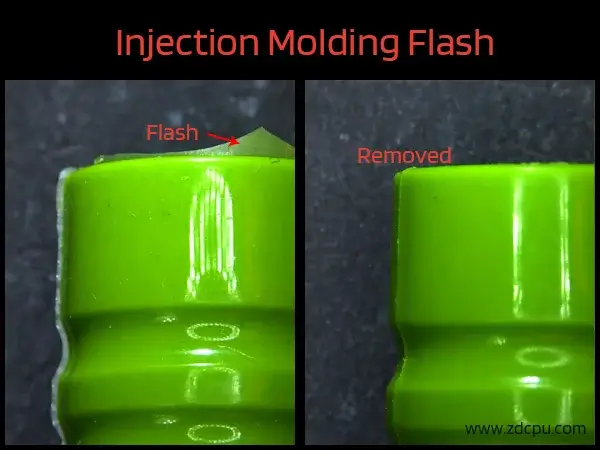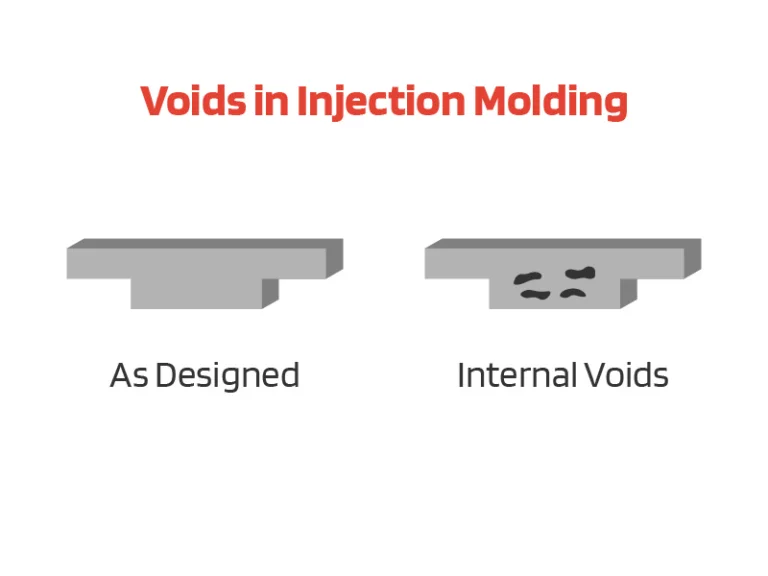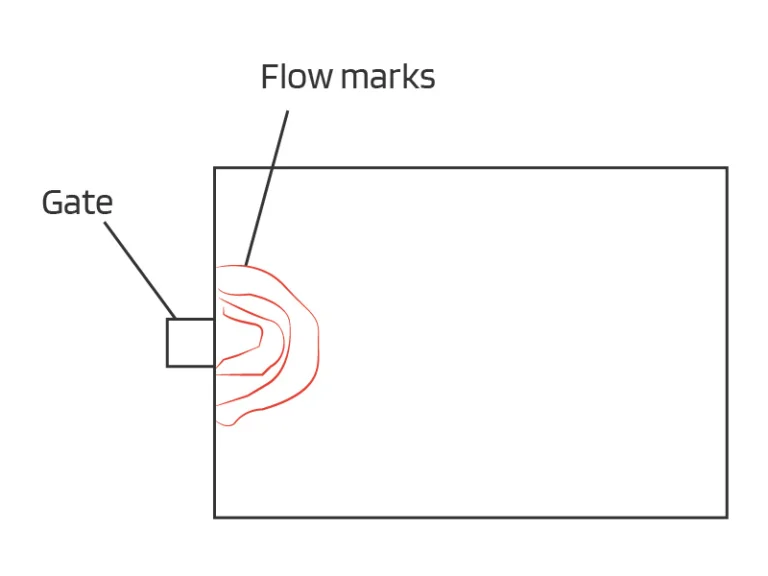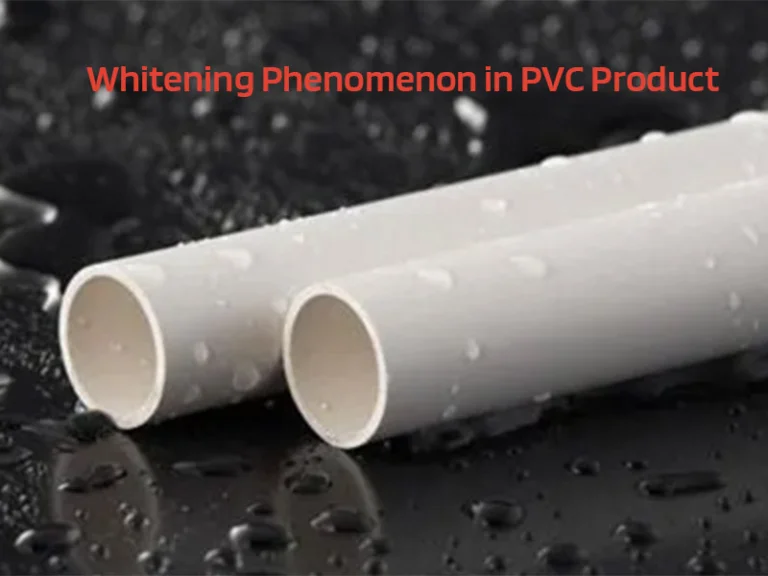An injection molding flash occurs when molten plastic escapes the mold and solidifies. It is a common injection molding defect. This defect will lower the quality of molded parts and potentially damage the mold, leading to increased costs. Understanding injection molding flash causes and solutions is crucial for efficient manufacturing. This article will explain plastic injection molding flash, exploring its causes, fixes, and prevention methods to optimize your projects.
What is Flash in Injection Molding?
Injection molding flash, often referred to excessive flash injection molding, is an unwanted protrusion on the final molded part. This defect typically occurs along the edges or seams of molded parts, particularly in areas where two halves of the mold come together. A thin layer of plastic is formed by excess molten plastic escapes and solidifies out of the mold cavity during the injection molding process. In the manufacturing process, the manufacturer should minimize or eliminate flash to improve molded parts quality and assembly.
What Causes Flash in Injection Molding?
Parting Line Mismatches
When the two halves of the mold don’t match perfectly, it creates gaps for molten plastic to escape, leading to flash formation.
Improper Venting
Inadequate venting in the mold can trap air or molten plastic, causing excessive pressure that pushes plastic into areas where it shouldn’t be.
Low Clamping Pressure
Inadequate clamping pressure can allow the mold to slightly separate during the injection process, leading plastic to escape and form a flash.
Low Viscosity
Low-viscosity plastics are easier to leak at mold parting lines, increasing the risk of flash.
Uneven Molten Plastic Flow
Inconsistent plastic flow due to issues like temperature variations can lead to flash at the boundaries where flow disparities occur.
Overfilling the Mold
Injecting too much material into the mold cavity can cause excessive pressure, leading to flash as plastic seeks escape routes.
Sprue Bushing Issues
Problems with the sprue bushing, such as wear or misalignment, can contribute to flash by allowing the plastic to seep through.
How to Remove Flash from Plastic Parts?
When injection molding excess flash occurs, it’s essential to eliminate flash promptly to ensure the final product meets quality standards. The removal of flash, also known as de-flashing, can be achieved through several post-processing techniques, the common three flash removal methods are trimming, grinding, and deburring.
Trimming
Trimming is a common method to remove excess flash from molded parts. It involves cutting or shearing the protruding flash material with precision. This process is typically performed manually, and skilled operators use specialized tools like knives or shears to trim the flash carefully. While effective, manual trimming can be time-consuming and labor-intensive, making it suitable for smaller production runs.
Grinding
Grinding is another technique used to remove flash from injection-molded parts. This method involves the use of tools or grinding machines to carefully shave off the excess material. Grinding can be more efficient than manual trimming, especially for larger production volumes. However, it requires specialized equipment and may generate plastic dust, which needs proper containment and disposal.
Deburring
Deburring is a process that focuses on smoothing the rough edges left by the flash. It typically involves using abrasive tools or brushes to eliminate sharp or uneven edges and create a smoother, more polished surface.
How to Prevent Injection Molding Flash?
Optimize Design for Manufacturability:
Begin the prevention process with a well-design. Design parts and molds with manufacturability in mind, and consider factors like parting lines and potential flash areas.
Slow Down the Injection Rate:
Controlling the injection rate can help reduce the chances of flash formation. Slower injection rates allow for better control of the molten plastic flow, minimizing the risk of escaping material.
Specify a Flash-Free Mold:
Invest in molds designed to minimize or eliminate flash. Molds with tight parting line clearances and proper alignment can significantly reduce flash issues.
Proper Mold Cleaning:
Keep molds clean and free of any residue or contaminants. Proper mold cleaning ensures that there is no residue that could result in a flash.
Proper Mold Maintenance and Process Improvements:
Regular mold maintenance is crucial for preventing flash. Ensure that mold components are in good condition, and implement process improvements to optimize molding conditions.
Proper Clamping Pressure in the Packing Phase:
Adequate clamping pressure during the packing phase of injection molding is important. Proper clamping pressure helps keep the mold closed tightly, reducing the possibility of flash formation.
Other Injection Molding Defects
Below are some common defects that may occur in injection molding. Each defect has its unique causes and prevention measures.
- Weld Lines
Weld lines occur when two flow fronts meet and fuse during the injection process. They can weaken the structural integrity of the part, affecting its performance.

Learn more information about weld lines in our previous blog: Understanding Injection Molding Weld Lines: Causes, Effects, and Solutions
- Sink Marks
Sink marks appear as depressions or dimples on the surface of the molded part, often caused by variations in wall thickness or cooling rates.
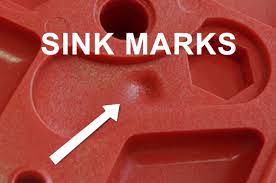
- Short Shots
Short shots happen when the molten plastic doesn’t completely fill the mold cavity, resulting in incomplete parts. This defect can be due to factors like inadequate material volume or excessive cooling.

Short shot is a common defect in injection molding, learn How to Deal with Injection Molding Short Shots: Causes and Solutions
- Splay
Splay is the appearance of white streaks or lines on the surface of molded parts, typically caused by moisture or contaminants in the plastic resin.
- Warpage
Warping occurs when the part deforms or twists after cooling, usually due to uneven cooling rates or improper ejection from the mold.

- Burn Marks
Burn marks are discolored or charred areas on the part’s surface, often resulting from overheating or excessive residence time in the mold.
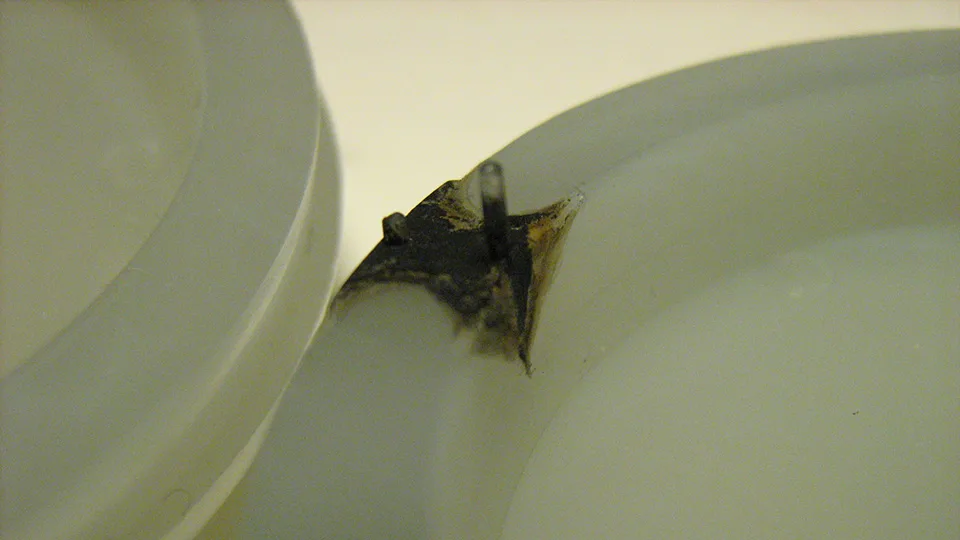
Check our other blog to understand what is burn mark and how to Dealing with Injection Molding Burn Marks
- Jetting
Jetting manifests as a streak or jet-like mark on the part, typically caused by high-speed plastic flow that doesn’t fill the mold cavity properly.

- Voids or Air Traps
Voids or air traps are pockets of trapped air within the part, which can lead to structural weaknesses or visual defects.
Conclusion
Injection molding flash is a defect that impacts product quality and threatens molds. This article has addressed its causes, solutions, and preventive strategies. To solve this challenge, partnering with professional manufacturers who specialize in process optimization and mold design, is important. If you would like to learn more about plastic injection molding, welcome to contact Zhongde.
Related FAQs
- A burr is a raised, rough edge left on a workpiece after machining operations like cutting or drilling.
- A flash is a thin layer of excess material that extrudes out from the mold parting lines during molding or casting processes
- Flash is an unwanted byproduct - a thin fin of excess material that protrudes from the parting line or mold surfaces.
- Parting line is an intentional seam or split line on the molded part where the two mold halves come together.
It is easy to fill the form.
Better Quality, Faster Delivery
Upload your design drawing and all uploads are secure and confidential!
